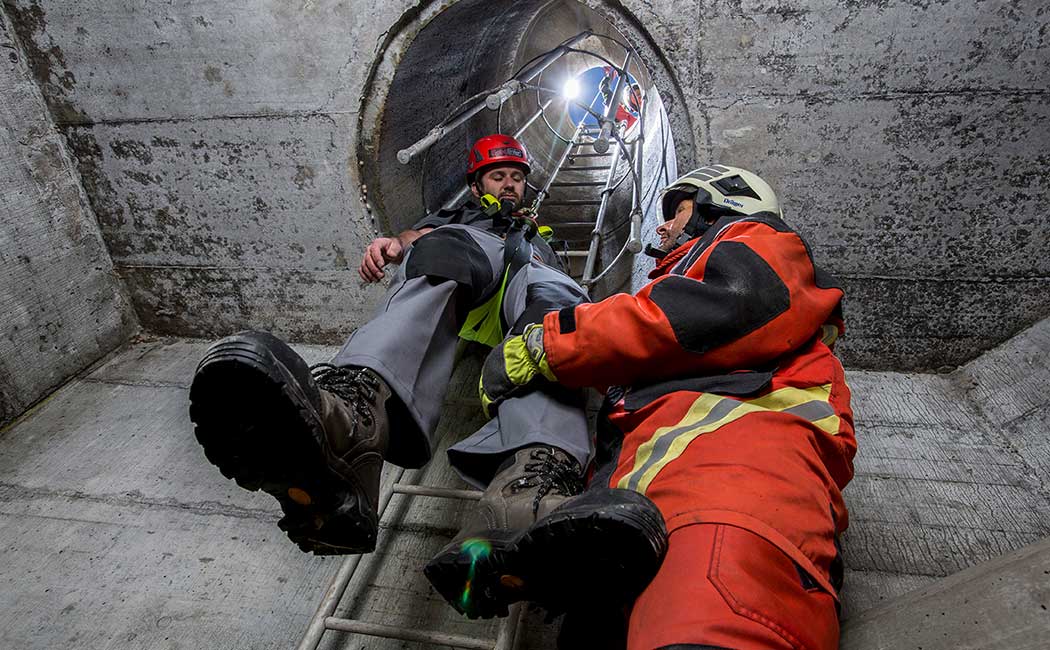- General terms
- Fall danger zone
- Falling edge
- Fall arrest for individuals
- Working alone
- General type approval
- Anchorage device
- Anchorage option
- Working on mobile elevating work platforms
- Arresting system
- Fall-through resistant
- Single anchorage point (anchor)
- Familiarisation
- Enclosed space
- Flat roof safety system
- Risk assessment
- Suspension trauma
- Swing fall
- Rescue concept
- Retention system
- Secondary fall arrest system
- Roof safety hook
- Safety and Occupational Health Coordinator (German: "SiGeKo")
- Thermal isolation
- Anchorage device inspections
- Training
- abZ & DIBt
- DGUV - German statutory accident insurance
- Collective protection
- Standards & regulations
- PPE
- Safety systems
- Access Technology
General terms
Enclosed space
According to DGUV Rule 113-004, "Vessels, silos and confined spaces", confined spaces are defined as areas which are predominantly or completely surrounded by solid walls - which also often incorporates narrow access routes. Such situations may result in a low air exchange rate, which can lead to the accumulation of hazardous substances and impurities. This - coupled with the confined conditions themselves - often gives rise to special hazards that do not occur in other workplaces.
Examples of confined spaces
Here are some examples of typical places where work has to be carried out in a confined space:
- Tanks, silos and bunkers
- Pits
- Manholes
- Cavities in buildings and inside machinery
- Wind turbines
- Box girders on bridges
For which methods of access is it important to provide fall protection?
There are different ways of accessing confined spaces. Particular attention must be paid to fall protection when using the following methods of access:
- Ladders
- Mobile ladders
- Vertical ladders
- Suspended access equipment according to DGUV Rule 101-005
- Body suspension devices and winches (lifting process lasting max. 5 min.)

When planning fall protection in a confined space, what do you need to pay particular attention to?
As opposed to fall danger zones in outdoor areas, falling in a confined space can pose a considerable risk - even if it is only from a low height. On the one hand, heavy soiling might cause someone to slip. On the other, the result of an injury might be significantly more serious due to the fact that rescue options are greatly restricted in such spaces.
As usual, technical fall protection measures should always be given preference over individual protection measures - particularly in confined spaces. Technical solutions, such as firmly-installed working platforms or suspended access equipment, should be used - especially, if your silo or bunker is filled with materials into which you might accidentally sink. In such cases, the use of personal fall protection equipment is generally not suitable.
However, even if personal fall protection equipment is only to be used in the case that a rescue operation needs to be carried out, you should still put this on prior to entering the area - and not take it off. If there are no compelling reasons for not doing so, you should maintain your connection to the rescue equipment at all times. As a preventive measure to protect you when you are working in a confined space with a higher risk level, you might consider using a safety device with an integrated rescue mechanism (e.g. a tripod with a rescue lifting device).

